

The Expected Impacts form provides an interface to combine response function databases created in FVS/FFE-FVS (see Exercise 15 to learn how) with FLP files to calculate expected and conditional impacts as well as conditional flame length. The outputs are appended to the FLP shapefile.
The calculations are the same as Net Value Change, except the units of NVC are not restricted to percent change, but can take on whatever variables are used in the response functions (e.g., tons carbon, biomass, habitat quality, etc).
Ager et al. (2010) compared the expected impacts on carbon pools before and after fuels treatments on the Fremont-Winema National Forest. The results show that the carbon loss from implementing fuel reduction treatments exceeded the expected carbon benefit associated with lowered burn probabilities and reduced fire severity on the treated landscape.
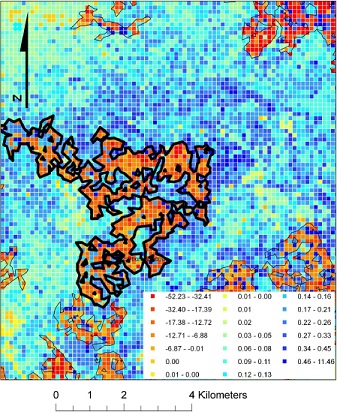
Map of expected carbon differences between a non-treatment and treatment scenario. Image shows positive expected carbon on the outside of treated areas (blue pixels) where treatments impeded growth of simulated wildfires. Figure 6 from Ager et al. 2010.
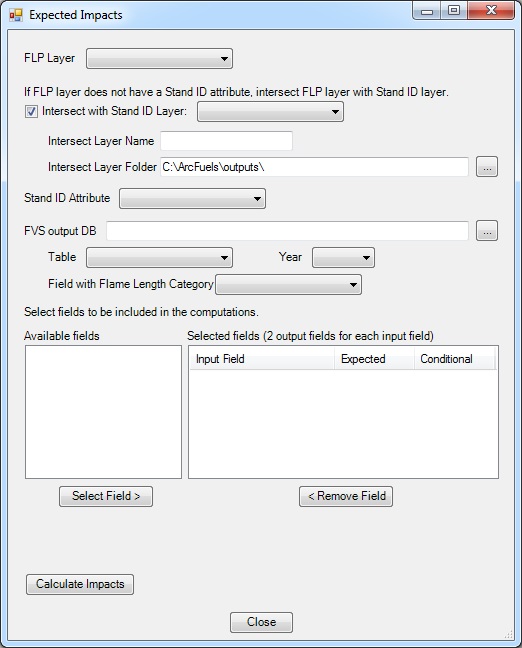
Selecting or intersecting the FLP layer:
Setting the FVS/FFE-FVS links.
The probability of large tree mortality from simulated wildfires was determined by processing stand inventory data in a small sub area of the Mt. Emily landscape through FVS/FFE-FVS at a range of flame lengths to develop species- and size-specific loss functions. The supplied loss database (flp6_subarea_loss.mdb) that includes the number of large (>21 in DBH) trees per acre that were killed from the FVS/FFE-FVS, and the supplied FLP_English_SubArea300 shapefile that was converted in Exercise 26.
Click the Risk button on the ArcFuels10 toolbar, then select Expected Impacts from the drop-down list.

Fill out the Expected Impacts form following the figure below.
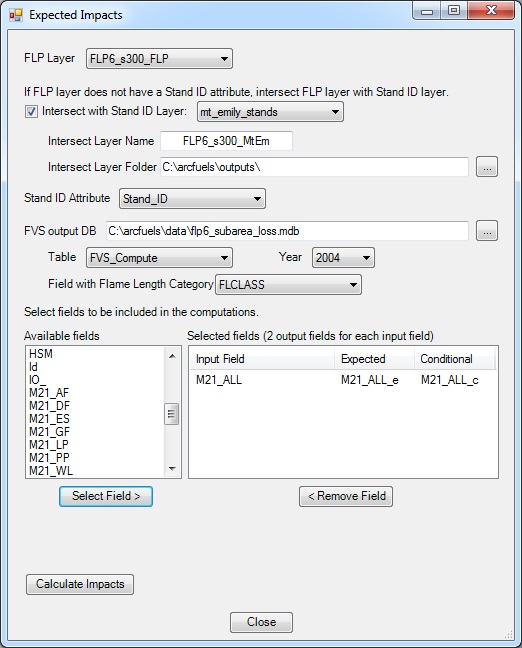
Return to ArcMap.
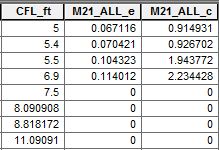
The newly appended attributes for FLP6_SA300_MtEm shapefile after the Expected Impacts calculations were completed.
Once these calculations are completed, the data can be exported into for summarization. Below is an example showing the outputs of such an exercise. This summarization was completed for the Mt. Emily study area for all species of large trees (>21" dbh) present for different treatment intensities and priorities in Ager et al. 2010.
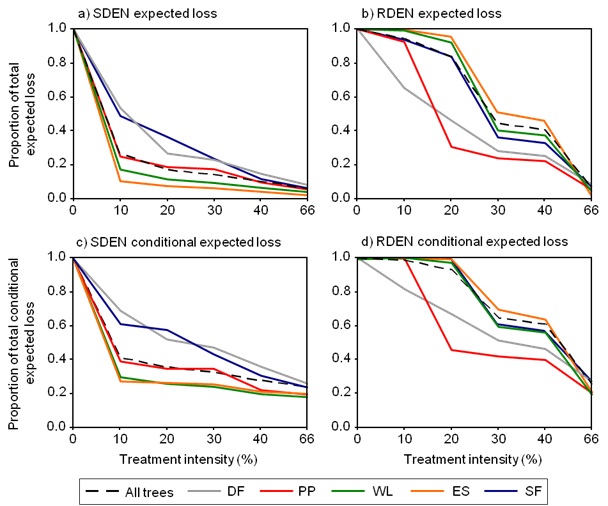
Expected loss, E(L), and conditional expected loss, CE(L), of large trees by species, treatment intensity, and scenario in the Mt. Emily study area. SDEN is a treatment priority that protects large trees, and RDEN is a treatment priority designed to protect residential structures. DF – Douglas-fir, PP – ponderosa pine, WL – western larch, ES – Engelmann spruce, SF – subalpine fir. Figure 9 from Ager et al. (2010).
To continue to the next section go to Summary Statistics.